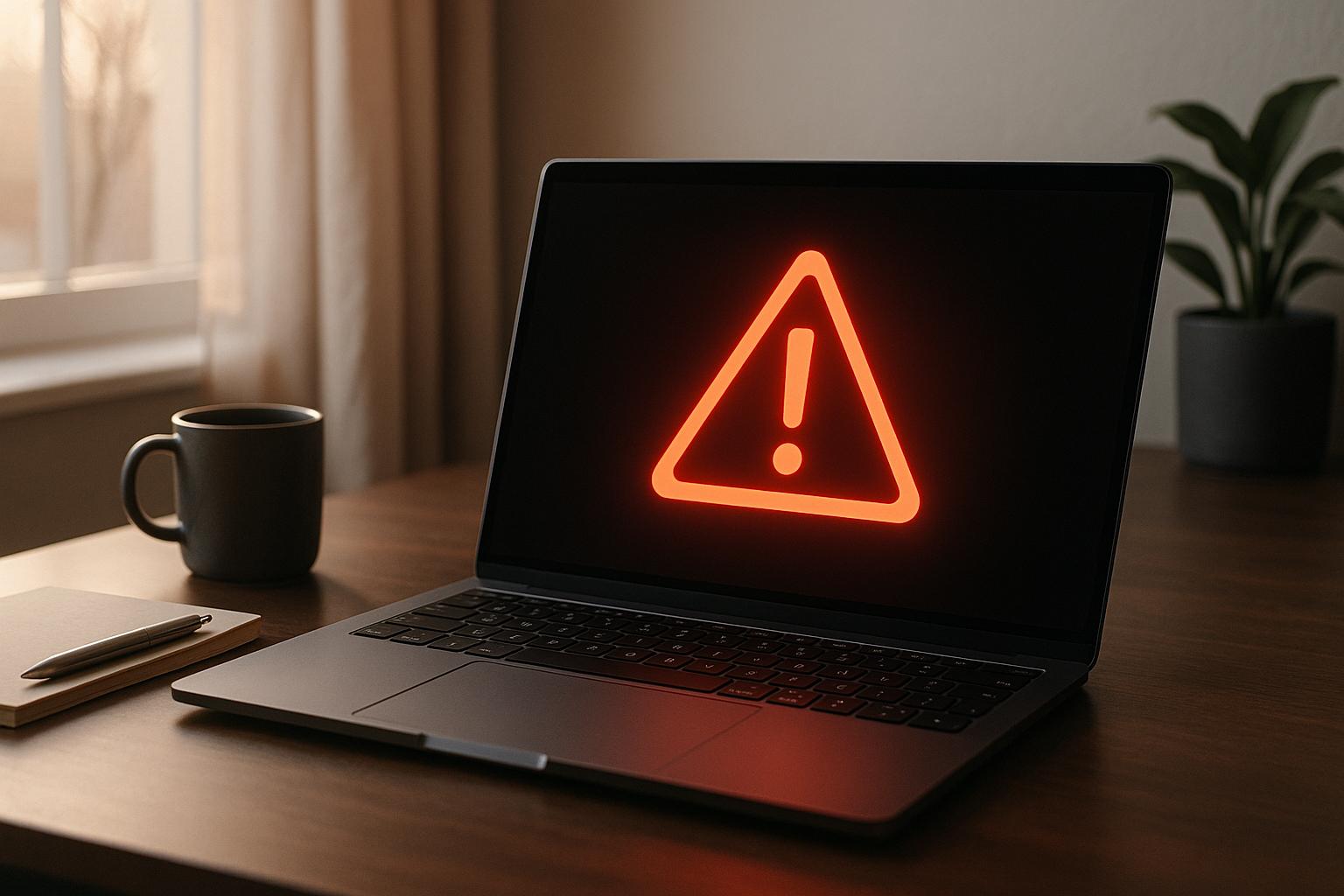When a crisis strikes, two key strategies come into play: SEO crisis management and crisis communication. Both aim to protect your brand but focus on different areas:
- SEO Crisis Management: Ensures your website and search results show accurate, positive content during a crisis. This involves optimizing keywords, creating crisis-specific landing pages, and addressing technical issues like website performance or harmful search results.
- Crisis Communication: Focuses on delivering timely, clear messaging to stakeholders (customers, employees, media). It involves press releases, social media updates, and direct responses to maintain trust and manage public perception.
These strategies are most effective when used together. SEO keeps your content visible and authoritative online, while communication shapes the narrative and reassures stakeholders. For example, during a data breach, SEO ensures your official response ranks higher than rumors, while communication provides transparency and accountability.
Quick Comparison
| Aspect | SEO Crisis Management | Crisis Communication |
|---|---|---|
| Focus | Search visibility and technical website performance | Public perception and stakeholder messaging |
| Tools | Google Analytics, SEMrush, keyword optimization | Press releases, social media, direct communication |
| Timing | Ongoing (prevention) and during crises | Immediate response during crises |
| Goal | Control search results and online narrative | Build trust and manage relationships |
Together, these approaches safeguard your brand’s reputation by addressing both online visibility and public sentiment.
Webinar: Handle an Online Reputation Crisis with SEO Autopilot Software
Main Functions and Goals of Each Approach
Building on the earlier definitions, let’s dive into the specific roles and objectives of each approach. While both SEO crisis management and crisis communication aim to safeguard your brand during tough times, they focus on different areas and use distinct strategies to achieve their goals.
SEO Crisis Management Goals
SEO crisis management zeroes in on the technical and search-related elements of your online presence during a crisis. The main objective here is to maintain control over search results when people search for your brand or the crisis at hand.
This involves keeping positive content visible at the top of search results while pushing down harmful or misleading information. It also includes addressing technical issues like website crashes, security breaches, or other problems that could hurt your search performance.
Another key aspect is optimizing website content and creating dedicated crisis-related landing pages targeting relevant keywords. This ensures that when people look for information, they find your official response rather than speculation or false narratives. By managing search engine rankings effectively, SEO crisis management helps you control the narrative and make your message easily accessible.
Protecting your online reputation through search results becomes essential during such times, enabling businesses to address customer concerns directly while maintaining strong online visibility.
Crisis Communication Goals
Crisis communication, on the other hand, focuses on managing relationships with stakeholders throughout the crisis. Its primary goal is to control the flow of information before, during, and after the crisis to minimize damage and maintain trust.
This involves building and maintaining trust with customers, employees, partners, and the general public. By responding promptly to concerns, crisis communication can reduce panic and demonstrate accountability, which helps reinforce confidence in your brand.
Another critical goal is to counter misinformation by delivering consistent and accurate updates across all platforms. Transparency, empathy, and swift action are cornerstones of this approach. Acknowledging the situation honestly, showing care for those impacted, and taking immediate steps to address the issue are all vital components.
Consistency in messaging across all channels – whether it’s a press release, social media post, or website update – is also crucial. This ensures that everyone receives the same accurate information, reducing confusion and preventing further misinformation.
How Both Protect Brand Reputation
As discussed earlier, SEO crisis management focuses on controlling what people discover online, while crisis communication works on shaping how they perceive the situation. Together, these approaches aim to safeguard your brand’s reputation by addressing both the technical and emotional aspects of the crisis.
SEO crisis management ensures your reputation is protected by managing what appears in search results, making sure your official responses and positive content dominate.
Crisis communication, meanwhile, protects your brand by shaping the story and influencing perceptions, using clear, empathetic, and consistent messaging to reassure stakeholders and rebuild trust.
When combined, these strategies create a well-rounded defense for your brand. By addressing both the technical side of visibility and the human side of trust, businesses can navigate crises more effectively and, in some cases, come out stronger on the other side. This dual focus lays the groundwork for understanding the key differences between the two approaches.
Main Differences Between SEO Crisis Management and Crisis Communication
While both strategies aim to safeguard your brand, they tackle crises from entirely different angles. Knowing these differences can help you apply the right approach at the right time, ensuring your team covers all aspects of a crisis effectively.
Different Focus Areas
The key distinction lies in their focus. SEO crisis management hones in on the technical and visibility aspects of your online presence, while crisis communication centers on managing public perception and relationships.
SEO crisis management ensures control over what people see when they search for information about your company or the crisis. This involves steps like optimizing content to push your preferred narrative to the top of search results, addressing technical website issues, and creating specific landing pages targeting crisis-related keywords. For example, during the BP oil spill, SEO teams worked on keywords like "BP oil rig" or "oil in ocean cleanup efforts" to influence online narratives, while communication teams handled press conferences.
On the other hand, crisis communication focuses on engaging with stakeholders and shaping public opinion. It delivers accurate updates, maintains consistent messaging, and addresses emotional responses to protect your reputation.
These differing priorities mean each approach requires unique tools and methods.
Tools and Methods Comparison
The tools and techniques for SEO crisis management and crisis communication are tailored to their distinct objectives.
SEO crisis management relies on search and technical tools. Platforms like SEMrush, Google Search Console, and Google Analytics are used to monitor search trends and identify relevant crisis-related keywords. The strategy revolves around keyword optimization, refining titles and meta descriptions, and crafting dedicated landing pages to provide searchers with relevant information.
Crisis communication, however, uses tools designed for media and relationship management. Media monitoring platforms like CisionOne and Brandwatch help track mentions and analyze public sentiment. This approach emphasizes press releases, social media updates, direct stakeholder communication (via emails or news conferences), and crafting key messages to address concerns.
Christopher Parker notes that publishing an official blog post about the issue is a way SEO can help control the narrative. While SEO focuses on shaping search results with technical precision, crisis communication emphasizes direct engagement to manage public sentiment.
When and Why Each is Used
The timing and purpose of these strategies differ significantly. SEO crisis management tends to be proactive and ongoing, while crisis communication is more reactive, responding to immediate threats as they arise.
SEO crisis management operates as a preventive measure. It involves monitoring brand mentions and industry keywords, building a library of positive content, and maintaining strong search visibility to prepare for potential crises. This ongoing work ensures your digital presence is resilient against unexpected challenges.
Crisis communication, in contrast, springs into action when a crisis hits. It addresses immediate concerns, responds to media inquiries, and manages real-time public perception. For instance, during the CrowdStrike incident in July 2024 – when a faulty software update caused a global IT outage affecting 8.5 million Windows devices and led to over 2,200 Delta Air Lines flight cancellations – crisis communication focused on immediate damage control, including a public apology during congressional testimony. Meanwhile, SEO crisis management would have worked to optimize search terms like "CrowdStrike update fix" or "Windows device recovery" to ensure helpful content ranked highly in search results.
sbb-itb-9f85f22
How SEO Crisis Management and Crisis Communication Work Together
While SEO crisis management and crisis communication serve different purposes, they become far more effective when combined. Together, they safeguard your brand from multiple angles, ensuring both immediate and long-term protection.
How SEO and Communication Support Each Other
When SEO and communication align, they amplify each other. SEO ensures that your communication team’s carefully crafted messages – like official statements or updates – reach a broader audience through search engine visibility.
For example, SEO enhances communication efforts by pushing your official updates to the forefront when people search for crisis-related topics. Stephanie Lowe from Move Digital highlights this connection:
"The connection between SEO and crisis management is often overlooked, but SEO plays a crucial part in shaping public perceptions and managing your business’s reputation during crises."
On the flip side, communication provides the foundation for SEO. Press releases, official statements, and crisis response materials can be optimized with strategic keywords, meta descriptions, and structured data, ensuring that accurate information is prioritized over misinformation.
Timing is critical here. While communication teams focus on immediate responses and addressing public concerns, SEO works behind the scenes to maintain visibility long after the initial crisis. This ensures that your carefully crafted content continues to dominate search results weeks or even months later.
When Both Approaches Are Needed
Some crises demand a combined approach. High-profile incidents, misinformation campaigns, or anything that threatens long-term brand reputation are prime examples.
Take Chipotle’s 2015 E. coli outbreak, for instance. The company’s crisis communication efforts addressed public health concerns and media scrutiny. Pairing this with proactive SEO strategies to highlight official messages could have further supported their recovery. By 2019, Chipotle’s stock had rebounded, becoming the second-highest performer on the S&P 500.
Misinformation campaigns also benefit from this dual strategy. When false narratives spread online, communication teams can directly address concerns, while SEO ensures that accurate, authoritative content outranks misleading sources. This approach not only manages immediate perceptions but also protects long-term search visibility.
The stakes are high. Reports suggest that 83% of public companies will face a crisis in the next five years that could lower their share price by 20–30%. With Google commanding over 80% of search traffic, businesses cannot afford to ignore the role of SEO in crisis management.
Why Teams Must Work Together
Once roles are defined and critical scenarios identified, collaboration between SEO and communication teams becomes essential. A seamless partnership ensures consistency and clarity across all crisis-related content.
By coordinating keyword strategies and creating multi-purpose content, teams can maintain unified messaging across press releases, social media, and crisis landing pages. This consistency is especially powerful when the messaging is both emotionally resonant and search-optimized. As Abdul Basir explains:
"SEO plays a pivotal role in shaping online narratives during reputation crises. Search engine results often influence public perception. Optimizing content strategically ensures that positive and relevant information about your brand is prominent, helping to mitigate the impact of negative incidents on your online reputation."
Monitoring is another area where collaboration shines. Communication teams track public sentiment and media coverage, while SEO specialists monitor search trends and rankings. Together, they can quickly adapt strategies as the situation evolves.
This teamwork also streamlines content creation. Instead of separate efforts, teams can produce multi-purpose materials – like press releases optimized for search, social updates that engage audiences, and crisis landing pages that inform stakeholders while ranking well in search results.
Best Practices for Combining SEO Crisis Management and Crisis Communication
A strong crisis response requires a seamless blend of SEO strategies and clear communication. As discussed earlier, managing search visibility while delivering effective messaging is crucial to safeguarding your brand. When SEO experts and communication teams work together, they can shape the narrative and protect your reputation more effectively than either could alone. The following practices align technical SEO with proactive communication to achieve that goal.
Make Crisis Messages Search-Friendly
When a crisis hits, your audience needs accurate information quickly. To ensure your messages reach the right people, focus on making them both clear and easy to find.
Start by conducting targeted keyword research and optimizing structured data. For example, during an oil spill crisis, using keywords like "oil spill solution" or "cleanup efforts" helped shift online discussions toward response actions instead of dwelling solely on negative aspects.
Add structured data markup to essential content, such as press releases, FAQs, and official statements, to improve their search visibility. Creating a centralized crisis resource hub on your website – complete with updates, FAQs, and contact details optimized with relevant keywords – can establish your site as the go-to source for accurate information. However, while technical optimization is important, it should never compromise the clarity or authenticity of your messaging. Your goal is to balance search engine optimization with clear, concise, and consistent communication across all platforms.
Monitor and Detect Problems Early
Beyond crafting search-friendly content, early detection of potential issues is critical to preventing a crisis from escalating. Research from the Institute of Crisis Management shows that most crises – 60–70% – are "smoldering" events with early warning signs, while only 30–40% are sudden.
To catch these signals, set up monitoring systems for both SEO metrics and communications. Keep an eye on industry-related keywords, brand mentions, and competitor activities across search engines and social media. AI-driven tools can track your website’s performance in real time, alerting your team to unusual traffic changes that might indicate emerging problems.
Social media is another key area to monitor. Pay close attention to comments on your company’s accounts, leadership profiles, and even competitor pages. Platforms like LinkedIn and Twitter often provide early indications of controversies. Combining these technical tools with human oversight – what some experts call a "crisis signal detection network" – can help you spot patterns and potential threats.
As Brendan Monahan, Head of U.S. Resilience and Crisis Management for a major pharmaceutical company, explains:
"There’s always a pattern of escalation."
By staying vigilant, you can respond quickly to misinformation and protect your credibility. Early detection shifts your approach from reactive damage control to proactive reputation management.
Use Multiple Communication Channels
After ensuring your messages are discoverable and monitoring for early warnings, it’s time to diversify how you communicate. Using multiple channels ensures your message reaches a broad audience while maintaining consistency, which is key for both credibility and SEO.
Create content that achieves both SEO and communication goals. For example, optimize press releases with relevant keywords while addressing stakeholder concerns. Social media updates can engage your audience while reinforcing your keyword strategy. Dedicated crisis landing pages can inform visitors while performing well in search results. Each platform may require a slightly different approach – for instance, website content should be optimized with strategic keywords in titles, headings, and meta descriptions, while social media posts should focus on engagement paired with clear messaging.
Close collaboration between teams is essential. PR, legal, and SEO teams should work together to ensure all responses meet legal standards, address public concerns, and maintain search visibility. Unified messaging prevents confusion and strengthens trust.
Engage professionally on all platforms. Respond to questions, criticisms, and concerns on social media while encouraging employees to share positive narratives . This multichannel strategy also provides backup – if one platform faces difficulties, others can continue delivering your message during critical moments.
As Ghulam Mohiuddin, Co-Founder of Techiter, points out:
"SEO is crucial for reputation management and crisis communication as it shapes online narratives. Optimized content ensures positive information ranks higher, pushing down negative content. This control over search results helps in shaping public perception during crises, and maintaining a positive online image."
Conclusion: Main Points
SEO crisis management and crisis communication serve distinct but complementary roles in protecting a brand during challenging times. While SEO crisis management focuses on mitigating online damage and ensuring visibility, crisis communication prioritizes delivering timely and clear messages to stakeholders. Together, these strategies work to safeguard and rebuild trust.
Research highlights the importance of preparation: businesses with defined crisis strategies can reduce losses by up to 45%, whereas those without plans risk a 69% increase in revenue loss. Moreover, companies with comprehensive strategies regain trust three times faster than those that rely solely on reactive measures.
The urgency of integrating these approaches is amplified in today’s digital world, where 77% of people rely on online sources for news. If negative content dominates search results, even the most well-thought-out messages lose their impact. This makes it clear that an integrated response, combining both SEO and communication efforts, is essential.
A successful strategy blends proactive and reactive SEO with effective communication. Proactive SEO establishes a strong online presence to cushion against potential crises, while reactive SEO ensures crisis-related content is optimized to control the narrative. Meanwhile, crisis communication delivers accurate and timely updates to stakeholders, ensuring transparency and trust.
As Stephanie Lowe from Move Digital points out:
"In the age of instant information, the right SEO approach can turn crisis situations from potential disasters into opportunities for reasserting your brand’s strength and resilience."
Given that 96% of businesses have faced disruptions in recent years, crisis management has become a necessity rather than an option. Matias Rodsevich, CEO of PRLab, underscores this reality, emphasizing its role as a core business need.
By integrating SEO crisis management with crisis communication, businesses can create a robust defense system. SEO ensures that critical messages are discoverable and shapes the narrative, while effective communication keeps the message clear, honest, and responsive to stakeholder needs. Together, these strategies not only protect but can also enhance a brand’s reputation during digital crises.
For expert guidance in crafting a strategy that combines proactive SEO and effective communication, visit Emilio Takas SEO Consulting at https://emiliotakas.com.
FAQs
How can businesses combine SEO crisis management and crisis communication to safeguard their brand during challenging times?
To protect your brand during tough times, it’s essential to combine SEO crisis management with crisis communication in a well-thought-out plan. Start by keeping a close eye on your online presence to catch potential problems before they escalate. Use crisis-related keywords effectively and set up dedicated landing pages that address concerns head-on with clear and honest information.
Social media is another powerful tool during a crisis. Use it to take control of the narrative and engage directly with your audience in real time. This approach ensures a quick response, helps safeguard your brand’s reputation, and influences public perception when it matters most. By syncing these strategies, you can preserve trust and reduce the risk of lasting harm to your brand.
What are the most common technical SEO issues businesses should be ready to handle during a crisis?
When an SEO crisis hits, businesses often encounter technical hiccups like broken links, sluggish page load times, and duplicate content. Other frequent challenges include missing or incorrect meta tags, disorganized site structure, mobile usability problems, and security flaws such as HTTPS issues.
Tackling these problems quickly is key to protecting both your search rankings and user confidence. Conducting regular audits and keeping a close eye on your site can help catch and fix these issues before they grow into bigger headaches.
Why is it essential to use multiple communication channels during a crisis, and how does this approach benefit both SEO and crisis communication?
Using various communication channels during a crisis is crucial to ensure your message reaches as many people as possible, quickly and effectively. Different individuals consume information in different ways – some turn to social media, while others prefer email updates or checking official websites. By spreading your message across multiple platforms, you minimize confusion, strengthen trust, and safeguard your brand’s reputation.
From an SEO standpoint, maintaining clear and consistent communication plays a key role in keeping your online presence strong. Regular updates and transparent messaging not only show users that your brand is responsive and reliable but also signal to search engines that you’re actively engaged. This can enhance your search rankings while boosting confidence among stakeholders.





